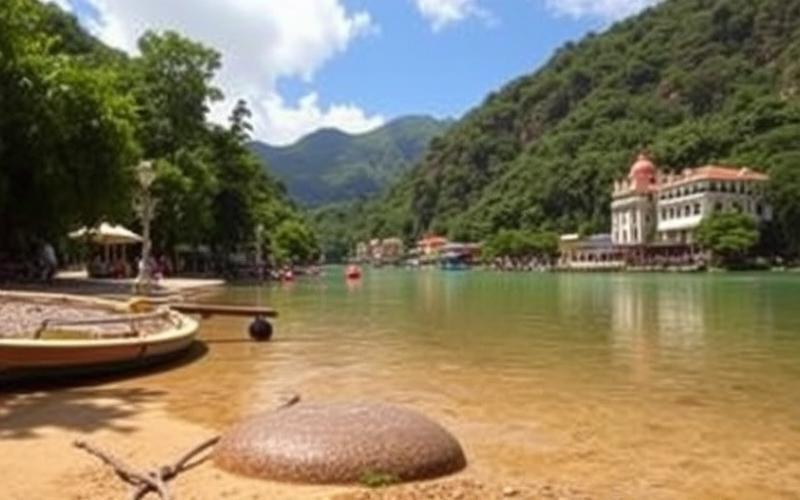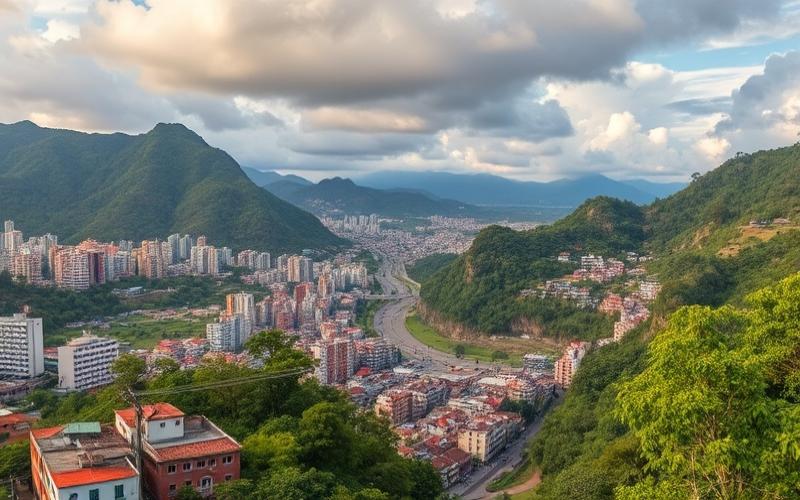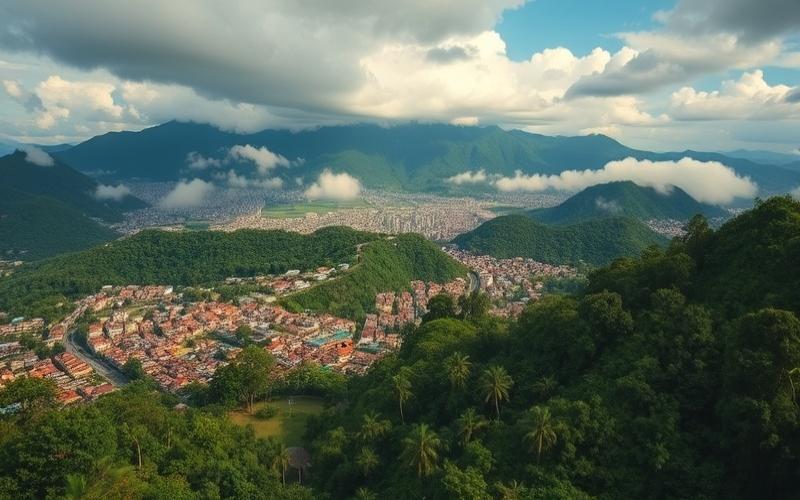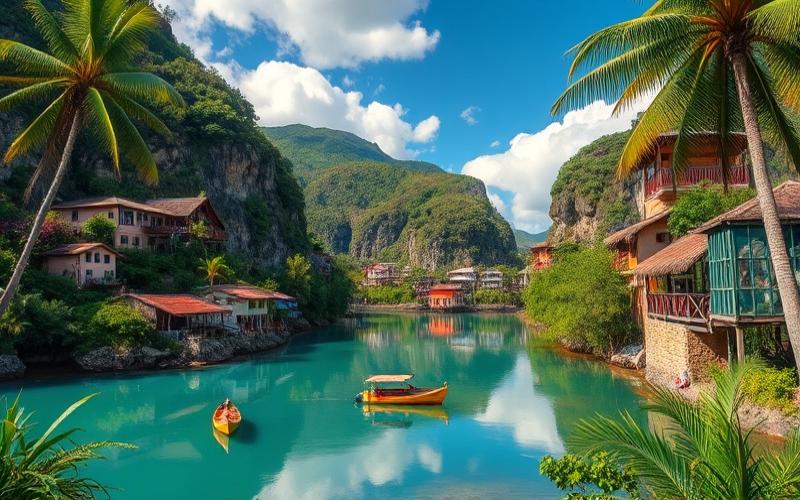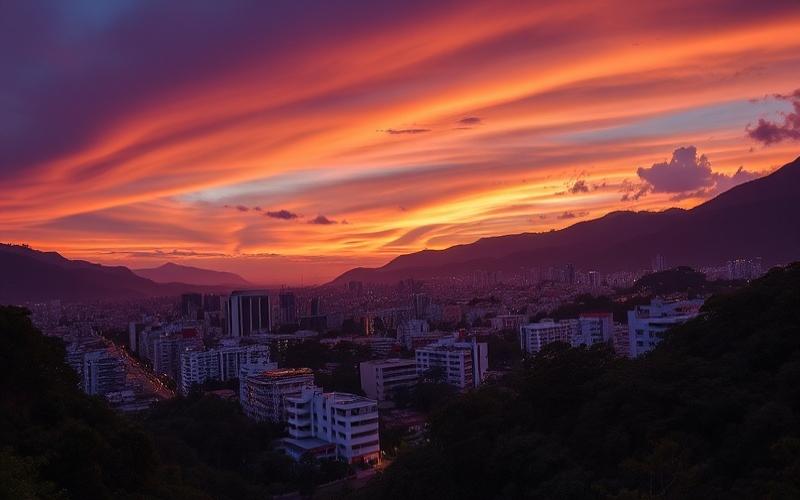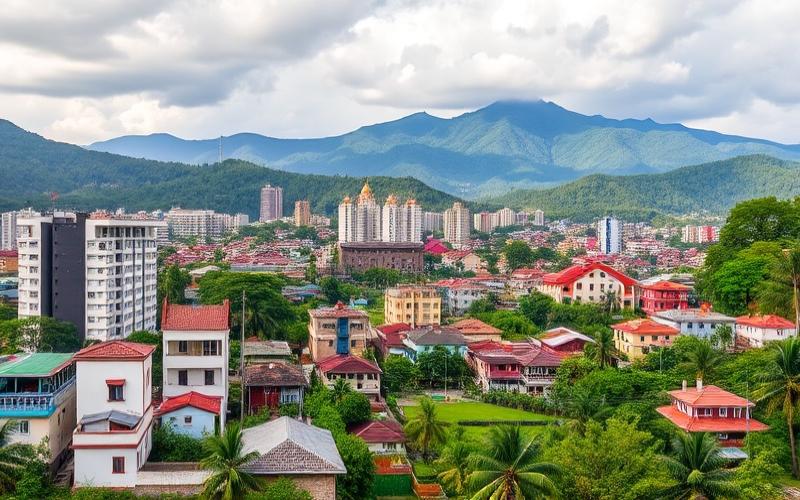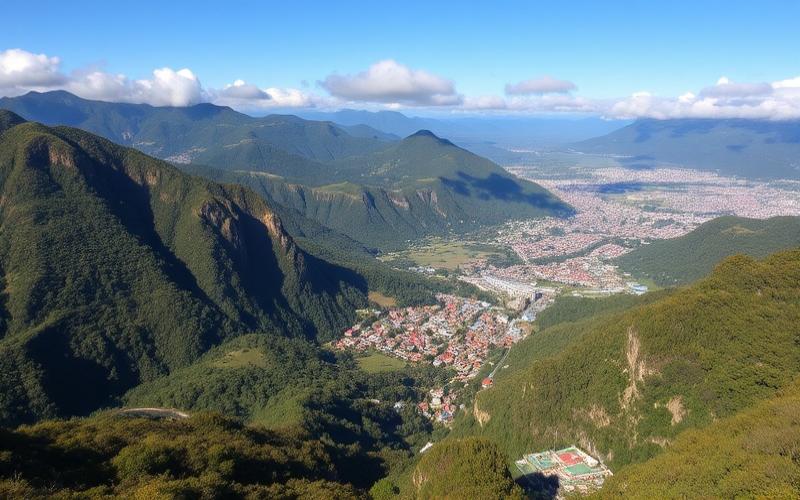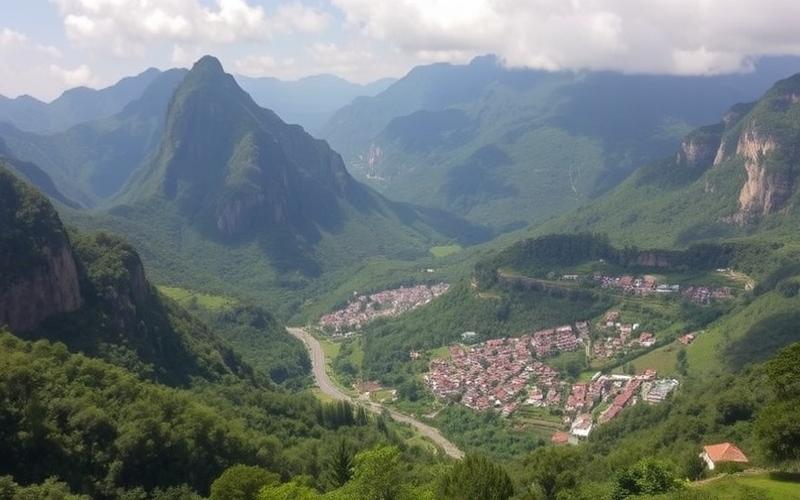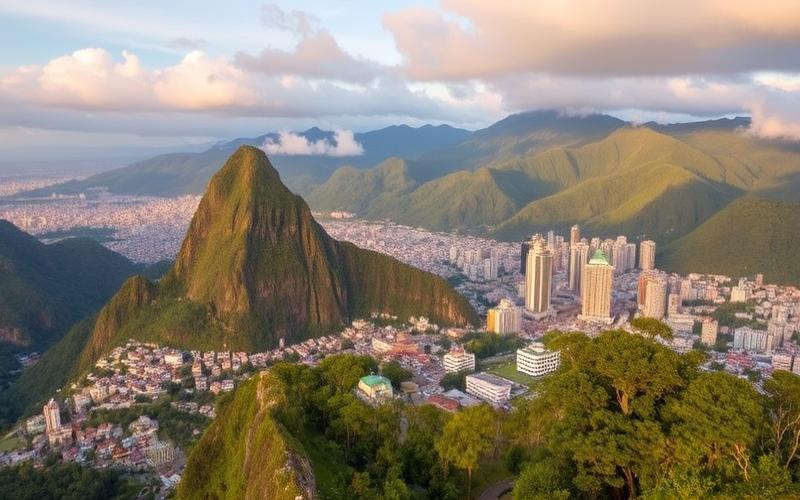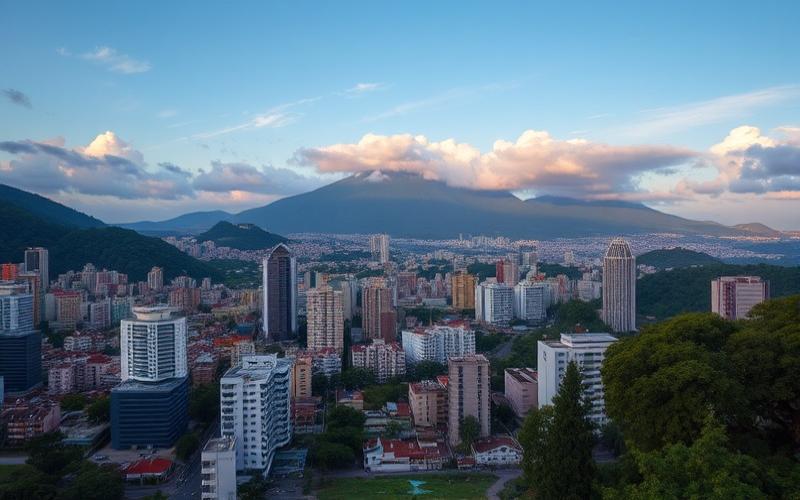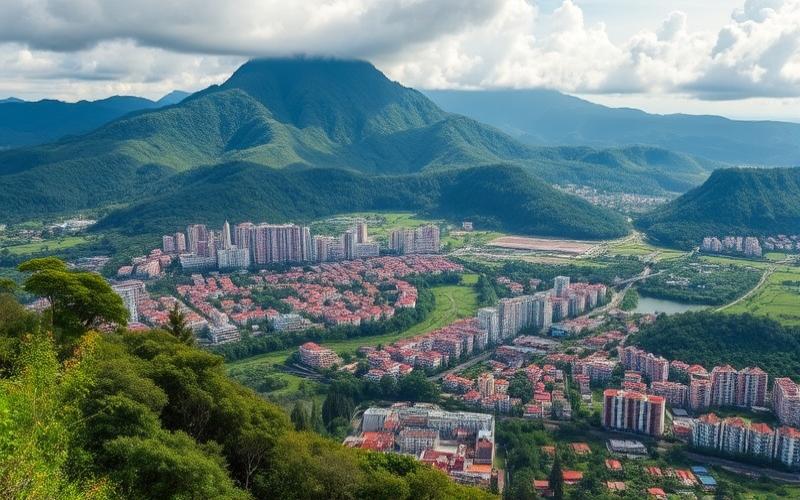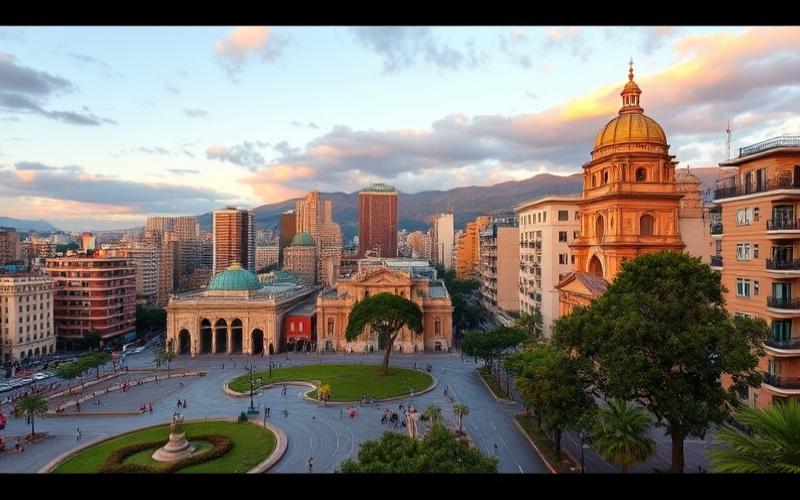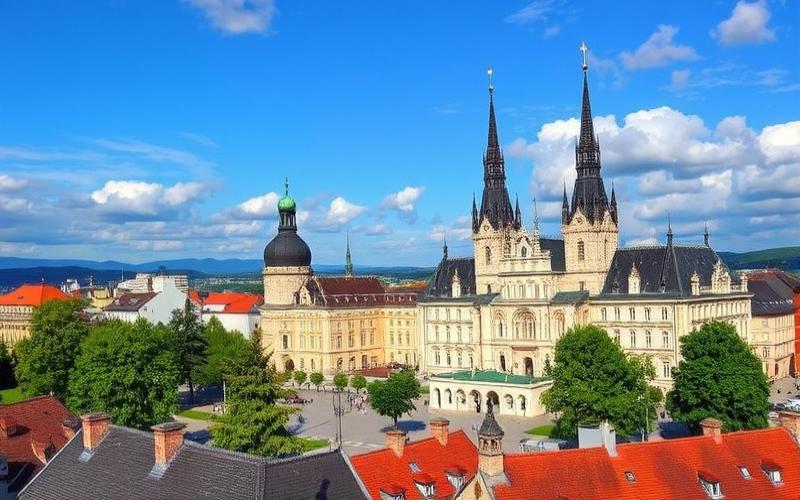
 Published on and written by Cyril Jarnias
Published on and written by Cyril Jarnias
Finding housing in Colombia can seem intimidating, especially for those discovering this culturally rich and diverse country for the first time. Between cultural differences and regional price variations, being well-informed is essential to avoid pitfalls.
This article offers a wealth of practical tips to successfully navigate the Colombian real estate market. Whether you want to settle in Bogotá, Medellín, or Cartagena, discover how to optimize your search by considering local particularities and making the most of available resources.
With our advice, finding housing in Colombia can become an exciting and enriching adventure.
Finding Housing in Colombia: Practical Tips
Types of Housing Available in Colombia
- Apartments: Predominant in large cities (Bogotá, Medellín, Cali). Available furnished (ideal for short stays) or unfurnished (cheaper, but often without basic amenities).
- Houses: More common in suburbs or small towns, often with a garden or interior courtyard. Ideal for families.
- Studios/Lofts: Suitable for students or digital nomads.
- Shared Housing: An economical and friendly option, especially around universities. Fewer offerings than in Europe, but expanding in large cities.
- Gated Communities (conjuntos cerrados): Secure, with 24/7 security, often equipped with a pool, gym, etc.
- Rooms in a Host Family: An economical solution with guaranteed cultural immersion.
| Housing Type | Main Features | For Whom? |
|---|---|---|
| Apartment | Furnished or not, secure, downtown | Expats, young professionals |
| House | More space, garden, suburbs or small towns | Families |
| Studio/Loft | Small, functional | Students, short stays |
| Shared Housing | Shared expenses, friendliness | Students, young professionals |
| Gated Community | Security, shared amenities | Families, remote workers |
| Room in a Host Family | Economical, local immersion | Singles, students |
Common Methods for Finding Housing
- Online Platforms: OLX, Vivendo, Finca Raiz, CompartoApto, Appartager, Airbnb (for temporary stays), Coliving.com (for shared housing).
- Social Media: Specialized Facebook groups for expatriates or specific neighborhoods.
- Word of Mouth: Very effective, especially for off-market offers or in residential areas.
- Real Estate Agencies: Practical for securing the transaction, but sometimes heavy administrative requirements (guarantor, proof of income, etc.).
- Local Newspapers: Print or online classifieds, still used in some cities.
Legal Aspects to Consider
- Written lease agreement mandatory (often for a minimum of one year).
- Security deposit: 1 to 3 months’ rent depending on the landlord.
- Fiador (local guarantor): Frequently required, especially for expatriates without credit history in Colombia.
- Rent default insurance: Alternative to a guarantor, sometimes imposed.
- Utilities: Not included in the rent. Their cost depends on the “estrato” (socio-economic category of the neighborhood).
Average Rental Prices (2025)
| City | 1-Bedroom Apartment/Month | 2-Bedroom Apartment/Month | High-End Neighborhoods (Approximate) |
|---|---|---|---|
| Bogotá | 2,050,000 COP ($440) | 3,000,000-4,500,000 COP | Usaquén, Chapinero, Rosales, Chico |
| Medellín | 1,230,000 COP ($264) | 2,000,000-3,000,000 COP | El Poblado, Laureles |
| Cali | 1,030,000 COP ($222) | 1,800,000-2,800,000 COP | Ciudad Jardín, Granada, San Fernando |
| Cartagena | 2,470,000 COP ($530) | 3,500,000-5,500,000 COP | Bocagrande, Manga, El Laguito |
| Barranquilla | 1,110,000 COP ($238) | 2,000,000-3,500,000 COP | Puerto Colombia, El Prado |
Note: Prices vary significantly by neighborhood (from estrato 1 to 6), the condition of the housing, and amenities.
Cultural and Practical Tips
- Negotiation: Rent negotiation is common. It is recommended to always propose a lower price in the first offer.
- Mandatory Visit: Always visit the property before signing. Check the general condition, water pressure, lighting, and neighborhood.
- Caution with Advance Payments: Never pay a deposit without a signed contract and verification of the landlord’s ownership.
- Contract Drafting: Demand a written contract detailing the rent amount, utilities, duration, termination terms, and condition of the property.
Common Mistakes to Avoid
- Signing a contract without understanding all clauses or without a reliable translation if you don’t master Spanish.
- Not verifying the landlord’s legal existence (ask for proof of ownership).
- Paying a deposit without having visited the property.
- Accepting a sublease (often prohibited).
- Forgetting to check utilities and any associated debts for the property.
Resources for Expatriates
- Facebook Groups: “French in Bogotá”, “Expats in Medellín”, “Colombia Expat”, etc.
- Specialized Sites: Appartager, CompartoApto, Coliving.com for shared housing.
- Local Real Estate Agent Services: Some specialize in assisting expatriates, facilitating the search, negotiation, and understanding of administrative procedures.
- Expatriate Associations: UFE (Union of French Abroad), Alliance Française, expatriate networks, dedicated forums.
Good to Know:
In Colombia, visiting properties before signing a contract is crucial, as online photos sometimes don’t reflect reality; various expatriate Facebook groups can also provide valuable advice and recommendations.
Budgeting for Housing in Colombia: How Much to Plan For
| Housing Type | Bogotá (COP/month) | Medellín (COP/month) | Cartagena (COP/month) | Rural Areas or Small Towns (COP/month) |
|---|---|---|---|---|
| 1-Bedroom Apartment – Downtown | 1,450,000 to 2,050,000 | 1,100,000 to 1,250,000 | 1,400,000 to 2,000,000 | 700,000 to 1,200,000 |
| 1-Bedroom Apartment – Outside Downtown | 1,200,000 to 1,450,000 | 850,000 to 1,100,000 | 1,100,000 to 1,500,000 | 500,000 to 900,000 |
| 2-3 Bedroom Apartment – Downtown | 2,300,000 to 3,500,000 | 1,800,000 to 2,600,000 | 2,500,000 to 4,000,000 | 1,000,000 to 2,000,000 |
| House (Small, Outside Downtown) | 1,800,000 to 3,000,000 | 1,300,000 to 2,200,000 | 2,000,000 to 3,500,000 | 900,000 to 1,800,000 |
Common Rental Expenses
- Water: 30,000 to 60,000 COP/month
- Electricity: 40,000 to 100,000 COP/month (depending on air conditioning or heating, rare at high altitudes)
- Gas: 20,000 to 50,000 COP/month
- Internet (High-speed, fiber): 70,000 to 120,000 COP/month
- Landline/Cable TV (Optional): 30,000 to 70,000 COP/month
Real Estate Agency Fees and Security Deposits
- Agency Fees: Generally 1 month’s rent (often shared between tenant and landlord)
- Security Deposit: 1 to 2 months’ rent
- Some landlords require a local guarantor (fiador)
Impact of Location and Amenities on Budget
- Central, secure neighborhoods close to shops, transportation, international schools: Rents 20 to 40% higher
- Outlying or popular areas: More affordable rents, but sometimes lower security or access to services
- Coastal cities and tourist areas (e.g., Cartagena): Rents often above the national average
Tips to Save on Housing
- Prioritize neighborhoods in the suburbs or well-served by public transportation
- Opt for shared housing or a shared apartment
- Negotiate the rent, especially for long-term contracts
- Compare via local platforms (Finca Raíz, Properati, Metrocuadrado) and consult expatriate or student Facebook groups
- Check if utilities are included in the rent before signing
Useful Resources for Estimating Costs
- Specialized Sites: numbeo.com, properstar.fr, combien-coute.net
- Local Real Estate Listing Platforms: Finca Raíz, Metrocuadrado, Properati
- Expatriate groups on social media for feedback
Sample Monthly Estimate for a 1-Bedroom Apartment in Medellín, Outside Downtown, in 2025
- Rent: 1,100,000 COP
- Water, Electricity, Gas: 120,000 COP
- Internet: 90,000 COP
- Total Monthly: 1,310,000 COP (approximately $285)
- Security Deposit to Plan For: 1 to 2 months’ rent
Important Note: The housing budget heavily depends on the city, neighborhood, security, proximity to transportation and amenities, and the building’s standard. Prices can change with the exchange rate and seasonality, especially in tourist areas.
Good to Know:
Plan for approximately $300 to $600 per month for a one-bedroom apartment in large cities like Bogotá or Medellín, while in rural areas, costs can drop to $150; don’t forget to add $100 to $150 for utilities, and agency fees and security deposit generally equivalent to one month’s rent. To save, target well-served and secure neighborhoods but away from tourist areas, and use local platforms to avoid high agency fees.
The Best Neighborhoods to Live as an Expatriate in Colombia
| City | Popular Neighborhoods | Safety | Amenities | Transportation | Cost of Living | International Community / Integration | Expatriate Reviews |
|---|---|---|---|---|---|---|---|
| Bogotá | Chapinero | Fair, caution at night | Bars, restaurants, coworking, universities | Access to TransMilenio buses, taxis | Moderate to high | Strong, many events and meeting places | “Easy to meet other foreigners, dynamic atmosphere.” |
| Zona Rosa | Good, surveillance | Shops, malls, nightlife | Close to transportation, taxis | High | Many expatriates, developed networks | “Comfortable neighborhood, reassuring, perfect for social life.” | |
| Usaquén | Good, residential | Green spaces, markets, restaurants | Buses, taxis | Moderate to high | Family community, retirees | “Safety, calm, local markets very appreciated.” | |
| Medellín | El Poblado | Very good, residential | Shops, restaurants, bars, malls | Metro, taxis | High | Very strong, active groups, many events | “Easy integration, modern and secure neighborhood.” |
| Laureles | Good | Cafes, green spaces, schools, shops | Metro, buses | Medium to high | Presence of expatriates, more local vibe | “More authentic, cheaper than El Poblado.” | |
| Envigado | Good, family-friendly | Supermarkets, parks, restaurants | Metro, buses | Moderate to high | Growing community, pleasant local life | “Perfect for families, tranquil atmosphere.” | |
| Cali | San Antonio | Average, caution in the evening | Cultural life, restaurants, colonial architecture | Buses, taxis, central area | Moderate | Presence of foreigners, bohemian vibe | “Lots of artists, friendly atmosphere.” |
| Granada | Fair to good | Gastronomy, bars, hotels, shops | Easy access, near downtown | Moderate to high | Several expatriates, nightlife | “Varied gastronomy, lively neighborhood.” | |
| Santa Monica, El Peñon, Normandia, Santa Rita | Good in residential areas | Malls, parks, restaurants | Buses, taxis | Medium to high | Expat communities, especially north and west | “Safety, proximity to shops, tranquil life.” |
Key Points by City/Neighborhood:
Bogotá
- Chapinero: Young, dynamic neighborhood, ideal for students and young professionals, great cultural diversity. Fair safety, but caution recommended at night. Many cafes, bars, coworking spaces. Lively nightlife.
- Zona Rosa: More upscale, very secure, perfect for those seeking comfort, immediate access to all amenities, very active nightlife.
- Usaquén: Village-like atmosphere, artisan markets, family restaurants, green spaces. Highly sought after by families and retirees, peaceful atmosphere.
Medellín
- El Poblado: Modern residential neighborhood, highly secure, center of nightlife and restaurants, close to the metro. High budget, but easy integration thanks to a strong international community.
- Laureles: More local vibe, less touristy, many parks and cafes. Better value for money, appreciated safety. More authentic for those looking to immerse in paisa culture.
- Envigado: Bordering Medellín, small-town atmosphere, safety and quality of life, very appreciated by families. Proximity to metro and amenities.
Cali
- San Antonio: Historic neighborhood, very appreciated for its bohemian vibe, cafes, and cultural life. Variable safety, caution advised in the evening.
- Granada: Gastronomic and festive, many upscale bars and restaurants, good safety in frequented areas.
- Santa Monica, El Peñon, Normandia, Santa Rita: Residential neighborhoods, enhanced safety in gated communities, many parks and malls. Ideal for a calmer life while remaining close to downtown.
Ease of Integration and Practical Tips:
- The presence of expatriate groups (notably in Medellín and Bogotá) facilitates integration. Platforms like Facebook or Meetup are widely used to organize events and share advice.
- Knowledge of Spanish, even basic, is a major asset to accelerate integration and avoid isolation.
- It is advisable to prioritize secure residences (gate, security), especially for families.
- For transportation, Medellín is the only city with a modern metro, which is an advantage for mobility. In Bogotá and Cali, the bus network and taxi apps are the main options.
Expatriate Testimonials:
“In Medellín, the welcome from locals and human warmth allowed me to feel at home very quickly. The expat community is very tight-knit, especially in El Poblado.”
“In Bogotá, Chapinero won me over with its diversity and cafes where you meet people from all over the world.”
“Cali is about the sweetness of life, salsa, and a more relaxed atmosphere, even if I avoid going out late in some neighborhoods.”
Housing Tips:
- Prioritize a short-term rental to start, to discover the neighborhood’s atmosphere at different times of the day.
- Never transfer money without having signed an official contract.
- For the budget, plan on average between 2 and 4 million Colombian pesos per month for a quality apartment in sought-after neighborhoods, including utilities.
Visual Summary of Recommended Neighborhoods:
| City | Recommended Neighborhoods |
|---|---|
| Bogotá | Chapinero, Zona Rosa, Usaquén, La Candelaria |
| Medellín | El Poblado, Laureles, Envigado |
| Cali | San Antonio, Granada, Santa Monica, El Peñon |
To Remember:
The favorite neighborhoods of expatriates in Colombia combine safety, easy access to amenities, cultural life, and a strong international presence, with options suitable for singles, families, or retirees alike.
Good to Know:
In Bogotá, Usaquén is prized for its safety and numerous restaurants, while Poblado in Medellín is appreciated for its modern amenities and attractive cost of living; Cali hosts neighborhoods like Ciudad Jardín with a large international community and easy access to public transportation.
Disclaimer: The information provided on this website is for informational purposes only and does not constitute financial, legal, or professional advice. We encourage you to consult qualified experts before making any investment, real estate, or expatriation decisions. Although we strive to maintain up-to-date and accurate information, we do not guarantee the completeness, accuracy, or timeliness of the proposed content. As investment and expatriation involve risks, we disclaim any liability for potential losses or damages arising from the use of this site. Your use of this site confirms your acceptance of these terms and your understanding of the associated risks.

